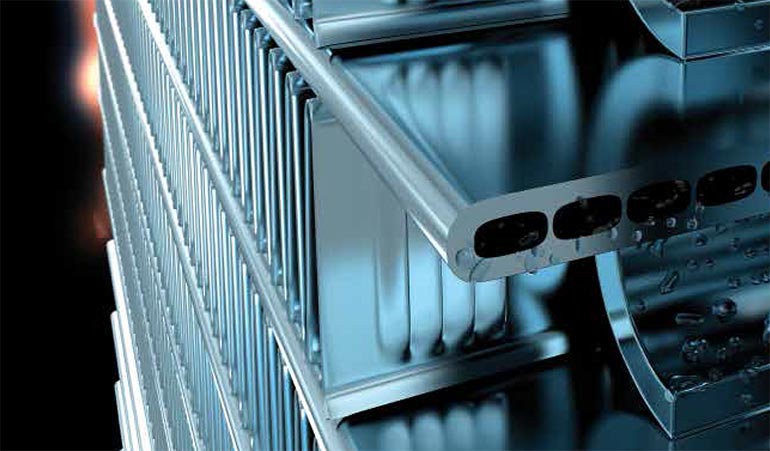
Optimizing Industrial Heat Transfer with Microchannel Heat Exchangers
In the dynamic landscape of industrial equipment, the demand for enhanced efficiency and compact design has spurred the development and widespread adoption of innovative technologies. Among these, the microchannel heat exchanger stands out as a key player, revolutionizing heat exchange processes across various industries.
Understanding Microchannel Heat Exchangers
A microchannel heat exchanger is a specialized device designed for the efficient transfer of thermal energy between two fluid streams. What sets it apart from traditional heat exchangers is its intricate network of small channels, typically on the micrometer scale. These microchannels significantly increase the surface area available for heat exchange, resulting in improved performance and efficiency.
Key Features and Advantages
- Compact Design: Microchannel heat exchangers are characterized by their compact and space-efficient design. The microscale channels allow for a higher surface area-to-volume ratio, enabling the creation of smaller and lighter heat exchangers without compromising their overall effectiveness. This feature is particularly crucial in industries where space optimization is a priority.
- Enhanced Heat Transfer Efficiency: The small dimensions of the channels promote turbulent flow, leading to more effective convective heat transfer between the fluid streams. This enhanced efficiency is a significant advantage in applications where rapid and precise temperature control is essential.
- Reduced Material Usage: The compact nature of microchannel heat exchangers not only contributes to space efficiency but also results in a reduction in material usage. This aspect is economically and environmentally beneficial, as it helps minimize the raw materials required for manufacturing.
- Improved Thermal Performance: Microchannel heat exchangers excel in managing high heat fluxes and temperature differentials. Their capability to handle extreme thermal conditions makes them well-suited for demanding industrial processes, such as those encountered in the aerospace, automotive, and electronics sectors.
Applications in Various Industries
Microchannel heat exchangers have found diverse applications across a range of industries, owing to their versatility and efficiency. Some notable applications include:
- Automotive Cooling Systems: In the automotive industry, microchannel heat exchangers are integral components of cooling systems for engines and electric vehicle batteries. Their compact size and efficient heat transfer properties contribute to improved performance in modern vehicle designs.
- Electronics Cooling: The electronics industry benefits significantly from microchannel heat exchangers, using them to manage the heat generated by electronic components. These heat exchangers are crucial in preventing overheating and ensuring optimal operating temperatures in electronic devices.
- HVAC Systems: Heating, ventilation, and air conditioning (HVAC) systems in both residential and commercial settings leverage the advantages of microchannel heat exchangers. Their compact design and efficient heat transfer capabilities contribute to energy savings and enhanced overall performance.
- Renewable Energy Applications: Microchannel heat exchangers play a vital role in various renewable energy systems, including solar thermal and geothermal applications. Their ability to efficiently transfer heat makes them essential in harnessing and utilizing sustainable energy sources.
Conclusion
Microchannel heat exchangers have emerged as a transformative technology, offering a compact and efficient solution for industrial heat exchange processes. Their small footprint, enhanced heat transfer efficiency, and broad applicability make them a cornerstone in the pursuit of increased energy efficiency and sustainability across industries. As industrial equipment continues to evolve, the widespread adoption of microchannel heat exchangers is poised to drive innovation and further improvements in heat exchange processes.



